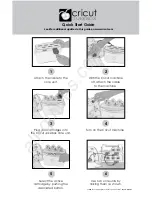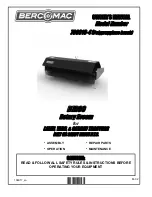
24
9.3.3 When to Charge the Battery
•
Opportunity charging is OK.
Charging the battery after every use will
not reduce its cycle life.
•
Partial state of charge is OK.
If the battery SOC is greater than 10% at
the end of discharge, it does not require an immediate charge.
•
Charge if below 10% SOC.
If the battery has been discharged below
10% SOC it must be charged within 24 hours to avoid permanent
damage to the battery. Otherwise irreversible damage to the battery
cells will occur in a very short period of time.
•
Low current extends life.
Charging at 50% of nominal current or lower
helps extend battery cycle life.
•
Proper temperature.
Ensure charging is within the charge temperatures
specified in
Table 2-3
DLP Environmental Specifications
.
NOTICE
The battery must be charged within 24 hours if it has been discharged below 10%
SOC. Otherwise, irreversible damage to the battery cells will occur in a very short
period of time, and void the warranty.
NOTICE
When beginning a charge below 0°C, the battery will initiate its internal heating.
Battery charging will not begin until the cell temperatures have reached 2°C.
9.3.4 Charging with a Lead-Acid Charger
CAUTION
FIRE AND BURN HAZARD:
Do not perform an equalization charge on lithium batteries.
Failure to follow these instructions can result in minor to moderate injury.
•
Not recommended.
For the reasons stated below, it is not
recommended to use a lead-acid charger.
•
It is possible
. Short-term charging with a lead-acid charger is possible
only if the bulk and absorption voltages are equal to or below the
bulk voltage. Refer to
Table 2-1
DLP Electrical Specification
for charging
parameters and
Figure 14
DLP Charge Graph
.
•
Gel profiles.
GEL profiles are typically the lead-acid settings closest to
the recommended Lithium settings.
•
No equalization.
Do not perform an equalization charge on lithium
batteries.
•
No temperature compensation.
Temperature compensation must be
disabled.
NOTICE
Some lead-acid charge profiles are within the LiFePO
4
charging voltages. However,
many will exceed the BMS high voltage protection limits. This will result in the BMS
disconnecting at the end of the charge cycle and likely causing the charger status
indicator to display an error.





































